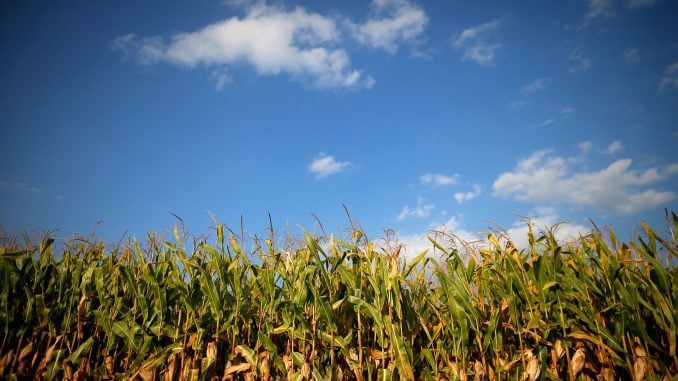
DURHAM — A relatively small company in Durham is part of a growing group of startups delving into the field of genetic modifications to food. Benson Hill, founded in 2012 and named after two scientists, mainly licenses crop technology to other companies. But it decided to produce its own higher-yielding corn plant because of the low development costs, said Chief Executive Matt Crisp.
Developing and marketing a traditional genetically modified crop might easily cost $150 million, which only a few large companies can afford, Crisp said. With gene-editing, that cost might fall as much as 90 percent.
“We’re seeing a huge number of organizations interested in gene-editing,” Crisp said, referring to traditional crop-breeding companies, along with technology firms and food companies. “That speaks to the power of the technology and how we’re at a pivotal point in time to modernize the food system.”
Seed development giants such as Monsanto, Syngenta AG and DowDuPont have dominated genetically modified crop technology that emerged in the 1990s. But they face a wider field of competition from startups and other smaller competitors because gene-edited crops have drastically lower development costs and the U.S. Department of Agriculture (USDA) has decided not to regulate them.
Relatively unknown firms including Calyxt, Cibus and Benson Hill Biosystems are already advancing their own gene-edited projects in a race against Big Ag for dominance of the potentially transformational technology.
Calyxt, an eight-year-old firm co-founded by a genetics professor, altered the genes of a soybean plant to produce healthier oil using the cutting-edge editing technique rather than conventional genetic modification.
Seventy-eight farmers planted those soybeans this spring across 17,000 acres in South Dakota and Minnesota, a crop expected to be the first gene-edited crop to sell commercially, beating out Fortune 500 companies.
“It’s a very exciting time for such a young company,” said Calyxt CEO Federico Tripodi, who oversees 45 people. “The fact a company so small and nimble can accomplish those things has picked up interest in the industry.”
Gene-editing technology involves targeting specific genes in a single organism and disrupting those linked to undesirable characteristics or altering them to make a positive change. Traditional genetic modification, by contrast, involves transferring a gene from one kind of organism to another, a process that still does not have full consumer acceptance.
Gene-editing could mean bigger harvests of crops with a wide array of desirable traits — better-tasting tomatoes, low-gluten wheat, apples that don’t turn brown, drought-resistant soybeans or potatoes better suited for cold storage. The advances could also double the $15 billion global biotechnology seed market within a decade, said analyst Nick Anderson of investment bank Berenberg.
The USDA has fielded 23 inquiries about whether gene-edited crops need regulation and decided that none meet its criteria for oversight. That saves their developers years of time and untold amounts of money compared to traditional genetically modified crops. Of those 23 organisms, just three were being developed by major agriculture firms.
The newly competitive landscape could foster more partnerships and licensing deals between big and small firms, along with universities or other public research institutions, said Monsanto spokeswoman Camille Lynne Scott. Monsanto — which was recently acquired by Bayer AG — invested $100 million in startup Pairwise Plants this year to accelerate development of gene-edited plants.
Calyxt plans to sell the oil from its gene-edited soybeans to food companies and has a dozen more gene-edited crops in the pipeline, including high-fiber wheat and potatoes that stay fresh longer.
Supporters of gene-editing say it allows a higher level of precision than traditional modification.
With CRISPR, one popular type of gene-editing technology used by Syngenta, scientists transfer an RNA molecule and an enzyme into a crop cell. When the RNA encounters a targeted strand of DNA inside the cell, it binds to it and the enzyme creates a break in the cell’s DNA. Then, the cell repairs the broken DNA in ways that disrupt or improve the gene.
The USDA also has no current plans to regulate gene-editing in animal products, according to a document provided by the agency.
The U.S. Food and Drug Administration, however, plans to regulate gene-editing in both plants and animals, FDA Commissioner Scott Gottlieb wrote in a June blog post. The agency is developing an “innovative and nimble” approach to regulating gene-editing, he wrote, that will aim to ensure its safety for both humans and animals while allowing companies to bring beneficial products to market.
